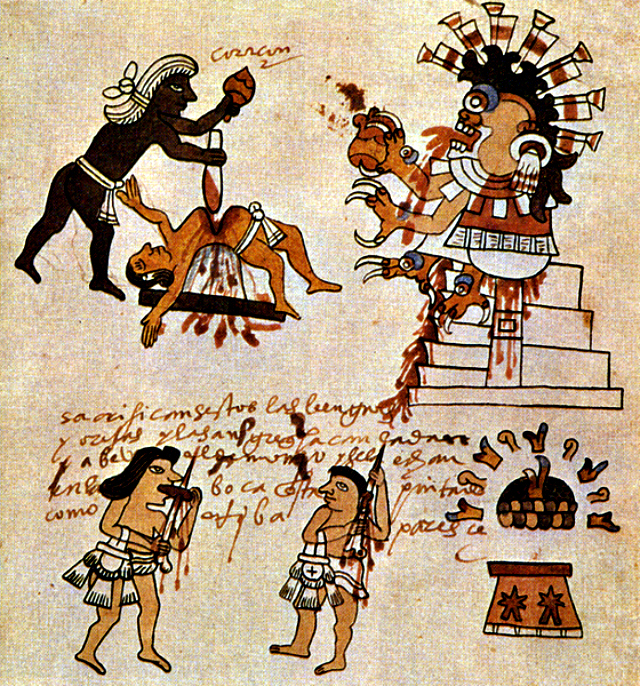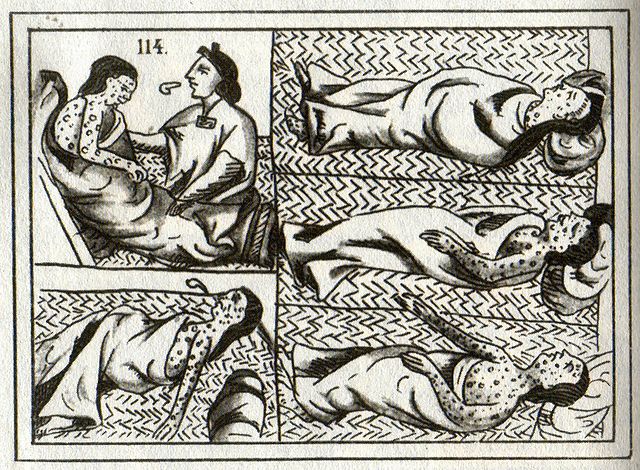
Eight Reasons the Aztecs Lost Their Empire.

The Aztecs were a society that lived in Central Mexico from the 14th to the 16th century. They were spread across a large part of Mexico and were well established, successful and dominant. Despite this, the Spanish arrived in 1519 with the intention to take land, treasure and power from the natives, and succeeded in their quest within a relatively short period of time. Their victory, which was declared in 1521, was due to many factors, eight of which we will explore in this article.
1. Reincarnation

When the Spanish originally arrived in Mexico, the Aztecs believed their leader, Cortes, was more than just a man. They believed he was a direct reincarnation of their own god, Quetzalcoatl. The Aztecs welcomed them into the city unaware that the Spanish had plans to conquer. This gave the Europeans a great tactical advantage when the battles began.
2. Horses

The largest animals the Aztecs had encountered previously were deer and jaguars. The Spanish army had a cavalry division consisting of horse-mounted soldiers. The speed, power and strength of the horses frightened the Aztecs. It is even suggested that they believed the horses might be gods. As the Spanish men were the ones who sat on top of these mysterious gods, the Aztecs thought the Spanish must be incredibly powerful. This fear contributed to their final defeat as they believed that they did not have the ability or right to claim victory over an army of gods.
3. Human sacrifice

Sacrifice has been part of many cultures throughout history and is still carried out today in some cultures. Sacrifice itself is often carried out to “pay a debt” or to “feed” a god. The intention is often to ensure fruitful success of the society carrying out the sacrifice. This may mean an offering in hope of a healthy farming yield or rain to replenish water supplies.
The ritual of human sacrifice is obviously different from animal sacrifice and difficult for our modern society to understand, but it was just as difficult for Europeans at the time to accept.
The Aztecs were not the only people to carry out human sacrifice, but they did it so often and in such a spectacular fashion that they became renowned for it. Under Aztec rule, thousands of people each year were killed in this fashion. Some historians estimate it was as many as 20,000 annually.
Those sacrificed were chosen in different ways; some were volunteers from their own community and others were captured during battles with neighbouring tribes. This practice obviously caused a lot of anger towards the Aztecs from others around them and earned them many enemies. Also, by killing off so many members of their own community, they decreased the population to such as extent that they had fewer warriors than they could have had when it came to fighting the Spanish.
4. Disease

The Spanish brought a deadlier weapon than even they realised; they carried a smallpox-infected African slave on their boat. The Aztec people had no contact with this disease before and, therefore, zero immunity and knowledge about its treatment. Smallpox attacks the blood vessels of the skin and causes painful pus-filled blisters. Those that survive this disease are often left blind, scarred, deformed and disabled.
The disease devastated the Aztecs with whole families dying. The death rate was so fast, there was little time to bury the dead and the Aztecs were forced to simply demolish houses with the bodies inside.
Smallpox weakened the army not only by physically killing off many of the soldiers but also by affecting the food supply. With so many people ill, the farming production was reduced. The remaining Aztecs were sick, hungry and weak.
5. Spanish army tactics

The Spanish army’s war tactics were different from those of the Aztecs. They used their experience recently gained in Europe, specifically Italy. The Spanish army had a flexible and modern approach to war. They organised their armies into separate regiments. It was a good system because the regiments worked independently but supported each other. The battle plan could be changed at any time before or during the battle.
The Spanish had better weapons; although they were primitive, they had guns. This gave them a significant edge over the Aztecs’ simple weaponry.
6. The Aztec army tactics

The Aztec tactics were deeply rooted in their beliefs in magic and rituals. They did, however, have typical Aztec battle plans. The fighting was usually initiated when their king beat on a drum. The more experienced warriors would advance first followed by the rest. The old and the young would follow behind the rest. They would use arrows, slingshots, darts and spears. The warriors at the front would retreat to the back to allow the next group to fight and so on until the elite were back in the front again.
The Aztecs had an obsession with taking live prisoners so they could be fed to the gods after the victory. This was a drawback in many cases as killing the enemy on the battlefield would have been a quicker and more effective way to secure victory.
7. Local enemies

The Aztecs had many enemies from among the neighbouring tribes. The Spanish also fought with these other native people but were able to form alliances with some of them, including the Texlacans who had a longstanding violent feud with the Aztecs. By working with the locals, the Spanish had physically more people and also inside knowledge on how the Aztecs fought their battles.
8. The conquistadors

Unknown artists; Mexico; second half of 17th century; oil on canvas. Representing the 1521 Fall of Tenochtitlan, in the Spanish conquest of the Aztec Empire. Jay I. Kislak Collection; Rare Book and Special Collections Division (26.2).
Those who traveled to Mexico with Cortes were part of the conquistadors. They were Spanish men who had no family or career and, therefore, no reason to return to Spain alive; they only cared about returning rich. This made them vicious fighters as they had nothing to lose and without any wives and children of their own, they had no empathy with the families they were killing.
They were very cruel and greedy. They came in search of fame and gold and were prepared to do anything to get it. They tricked, stole, killed, raped and even burnt down entire villages.
The world could be a barbaric place in the 16th century; however, their morality was questioned even in their time.
The Spanish were Christians. These particular Christians had no respect for anyone who didn’t follow Jesus. They laughed at the gods that other cultures worshiped and believed that those people could not possibly have souls. This meant that they had no moral issues with destroying them.
TO LEARN MORE ABOUT THE AZTECS:
- Ten Essential Facts You Need to Know About the Aztecs!
- Human sacrifice – 10 Aztec sacrifice facts!
- Aztec Civilization Timeline.
- 10 Most-Asked Questions About the Aztecs — Aztec Facts !
AZTECS! Video Playlist.
A detailed playlist of the videos is listed below.
The Playlist:
- Summary of Aztecs – Aztec Essentials in 86 seconds by IP Factly
- 10 Aztec Sacrifice Facts – Aztec Human Sacrifice Essentials in 120 Seconds by IP Factly
- The Aztec Empire Summary – by Sandra Alvarez
- Aztec Empire & Culture Interesting Facts, Anthropology 1 by PsycheTruth
- Aztec Empire & Culture Interesting Facts, Anthropology 2 by PsycheTruth
- Aztec Civilization by LearningHelp
- Tenochtitlan (The Impossible City) by John Fitz
Sources:
http://aztecs.mrdonn.org/
http://www.aztec-history.com/
http://aztecs.mrdonn.org/spanish-arrival.html
http://www.aztec-history.com/fall-of-the-aztec-empire.html
http://www.bbc.co.uk/history/british/tudors/conquistadors_01.shtml
http://en.wikipedia.org/wiki/Spanish_conquest_of_the_Aztec_Empire





this is pretty good
Oof
needs more
Maybe ok
Really good sight
Cool Site
heller
there are not 10 facts!!!! 🙁
Cool
ok
coool
idc about this that much
this is ok ig